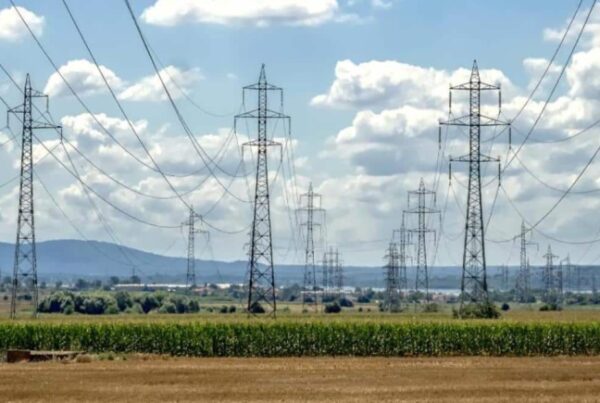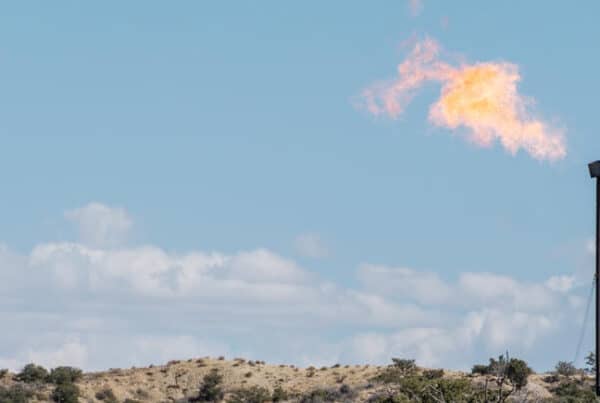This blog series covers the monthly La Plata Electric Association (LPEA)* Board of Directors meetings. We’re tracking the board for transparency and accountability, as well as to stay current on their renewable energy initiatives. Find past and future spotlights here.
At the December La Plata Electric Association (LPEA)* board meeting, member Dr. Lauri Costello spoke to our elected directors. “As a physician, I am concerned about the health impacts of coal,” she said, “All steps in the lifecycle of coal contribute to four out of five of the top causes of death.”
But when Dr. Costello asked Tri-State Generation Transmission** (who generates our power) and LPEA (who sells it to us) to study those impacts, to quantify costs to our community’s health, she was met with dissension from both.
“Last spring Tri-State was here,” Dr. Costello explained, referring to a presentation Tri-State gave LPEA members on their power supply, “And Tri-State just said the board didn’t ask them to study [health]. That comment still gives me trauma.”
LPEA board members grumbled, claiming health impacts are impossible to calculate, that there are other variables (i.e.“people smoke”) and therefore you can’t draw conclusions of cause and effect. Director Davin Montoya dismissed the request, stating, “We have to deal with facts.”
What Director Montoya and others on the board may not understand is that you can, in fact, “put a number on it.” Health science is just that, a science. People have been calculating public health impacts on health for decades.
By unit of energy produced, Tri-State rates 2nd worst in the country for nitrogen oxide emissions (13,170 tons) and 32nd for sulfur dioxide pollution (6,243 tons). In 2015 alone Tri-State’s coal plants released 100lbs of mercury [1].
We understand the health threats of these emissions. Nitrogen oxide (NOx) mixes with other particles in the air to form ground-level ozone, a pollutant that aggressively reacts with lung tissue to aggravate lung and cardiovascular diseases [2]. Sulfur dioxide (SO2) is also associated with respiratory complications [3]. Mercury is a well-known neurotoxin affecting development, coordination, vision, and feeling [4].
Don’t take our word for it. Check out the list of sources at the bottom of this post, or peruse this Physicians for Social Responsibility report which compiles 80 such studies into an easily accessible review.
We know enough about these pollutants to calculate their impact on our health:
- The health care cost of burning coal is, on average, estimated to be $0.19–$0.45/kWh (or nearly 50% of what Tri-State sells its power for!) [5]
- Or, measured another way, the health care costs of emissions are up to $28,000/ton SO2 and $16,000/ton NOx. [6]
- Tri-State’s own Nucla, Craig, Springerville, and Laramie plants are purported to cause $272,215,000 in health damages each year. [7]
The question is not, can we study the health care costs of LPEA’s energy sources? But rather, are we willing to?
“I’m not qualified [to study health impacts], it is outside our staff’s expertise,” LPEA’s CEO Mike Dreyspring told Dr. Costello. “I’m not trying to say that we shouldn’t… I’m not ignoring it.”
Mr. Dreyspring, of course, should not be quantifying the impacts of mercury, NOx and SO2 on public health. LPEA should, however, tap into public health research and take such impacts into account.
It is important to understand the toll that LPEA’s coal-fired power purchases are having on the health of our community. If nothing else, we owe it to our children and grandchildren.
We hope that Mr. Dreyspring, the board, and LPEA staff take Dr. Costello’s request seriously. Because without the data, without the “facts” to inform LPEA’s decisions, we are ignoring it.
Sources
1. Tri State Data
- M.J. Bradley & Associates. (2017). Benchmarking Air Emissions of the 100 Largest Electric Power Producers in the United States. Page 15.
2. Nitrogen Oxide and Ozone
- US EPA. “Ozone Basics.” 2016.
- Centers for Disease Control and Prevention. “Ozone and Your Health.” 2016.
- Bell ML, et al. “Ozone and short-term mortality in 95 US urban communities, 1987-2000.” JAMA. 2004.
- Gryparis A, Forsberg B, Katsouyanni K, et al. “Acute Effects of Ozone on Mortality from the “Air Pollution and Health: a European approach” project.” Am J Respir Crit Care Med. November 2004.
- Bell ML, Dominici F, and Samet JM. “A Meta-Analysis of Time-Series Studies of Ozone and Mortality with Comparison to the National Morbidity, Mortality, and Air Pollution Study.”Epidemiology. July 2005.
- Schwartz J and Neaas LM. “Fine Particles Are More Strongly Associated than Coarse Particles with Acute Respiratory Health Effects in Schoolchildren.” Jan 2000.
3. Sulfur Dioxide
- Rall DP. “Review of the Health Effects of Sulfur Oxides.” Environ Health Perspect. Aug 1974.
- Dept. of Health and Human Services, Public Health Service Agency for Toxic Substances and Disease Registry. “PUBLIC HEALTH STATEMENT SULFUR DIOXIDE.” Dec 1998.
- US EPA. “Sulfur Dioxide Basics.” 2017.
4. Mercury
- US EPA. “Health Effects of Exposures to Mercury.” 2017.
- BioDiversity Research Institute. “Pilot Study of the Ecological Effects of Mercury Deposition in Mesa Verde National Park, Colorado.” 2010.
- Fthenakis, VM, et al. “An assessment of mercury emissions and health risks from a coal-fired power plant.” Journal of hazardous materials. 1995.
5. Health Impact Analyses
- Machol B and Rizk S. “Economic value of U.S. fossil fuel electricity health impacts.” Environ Internat. Feb 2013.
- Buonocore J, et al. “Using the Community Multiscale Air Quality (CMAQ) model to estimate public health impacts of PM2.5 from individual power plants.” Environ Internat. July 2014.
- Abt Associates, Clean Air Task Force. “Death and Disease from Power Plants.”
* La Plata Electric Association (LPEA) is a member-owned rural electric cooperative that provides power to La Plata County, Archuleta County, and parts of Hinsdale and Mineral counties in Southwest Colorado. LPEA buys all of its power from Tri-State (see below).
** Tri-State Generation & Transmission Association is a not-for-profit, wholesale power supplier that services 43 electric cooperatives and districts in Colorado, Nebraska, New Mexico and Wyoming, including LPEA.





Thank you for the report. Dr Costello graciously offered to provide LPEA with additional research, articles and data that should advance our understanding on this. LPEA is grateful for her engagement.
She did! We thank you for your willingness to consider her ideas and sources. And we look forward to future discussions on the topic!
It is vitally important for LPEA and Tri State to have and use public health information when making decisions about how electricity is generated. Thank you SJCA for sharing this information, and for continuing to apply pressure so that we can move towards clean, renewable, healthier energy sources.
Being a coop, I believe means that we the members have pooled our financial assets for a common goal….to provide electricity to our homes and businesses….this being said, I think it is of critical importance to seek out and purchase the cleanest electricity with the fewest health by products for our members here at lpea….i for one would welcome a rate increase if it means a cleaner world for our children and grandchildren.
The numbers mentioned here are best guesses. They are not definitive and are presented as such. I think this can be misleading. The doctor mentioned at the meeting that “it would be hard to find a definitive number.”
Hi Marcy, Thanks for your comment! The numbers are intended to simply show that health care costs can be measured, as some LPEA Board members claimed they could not be. From our interpretation, Dr. Costello’s request seemed less geared toward LPEA quantifying and compensating for health impacts, and more toward LPEA genuinely considering the health costs of their power supply decisions as they move forward in an uncertain energy economy.